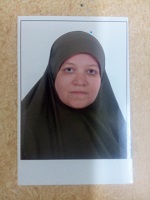Mephedrone (4-methylmethcathinone) is one of a number of synthetic cathinones that have emerged as novel psychoactive substances (NPS). They are often considered “legal highs” and sold as “bath salts” or “plant food". The present study was designed to validate a new method for detection and quantification of mephedrone: Bath salts in the urine by High performance liquid chromatography- diode array detector (HPLC-DAD). The analyte was extracted from samples by methyl tert - butyl ether (MTBE) in the presence of ammonium hydroxide as alkaline medium. Chloropheneramine was used as internal standard. The calibration curves were linear (r2 > 0.99) in the concentration range of 250–4000 ng/ml. Limits of quantification was 250 ng/ml. The method showed good accuracy and precision. The method was successfully applied to quantify mephedrone from authentic samples of experimental animals (white newzeland rabbits) which received mephedrone orally in a single dose of different concentrations. The method was completely validated and can be of interest to clinical and forensic laboratories.

